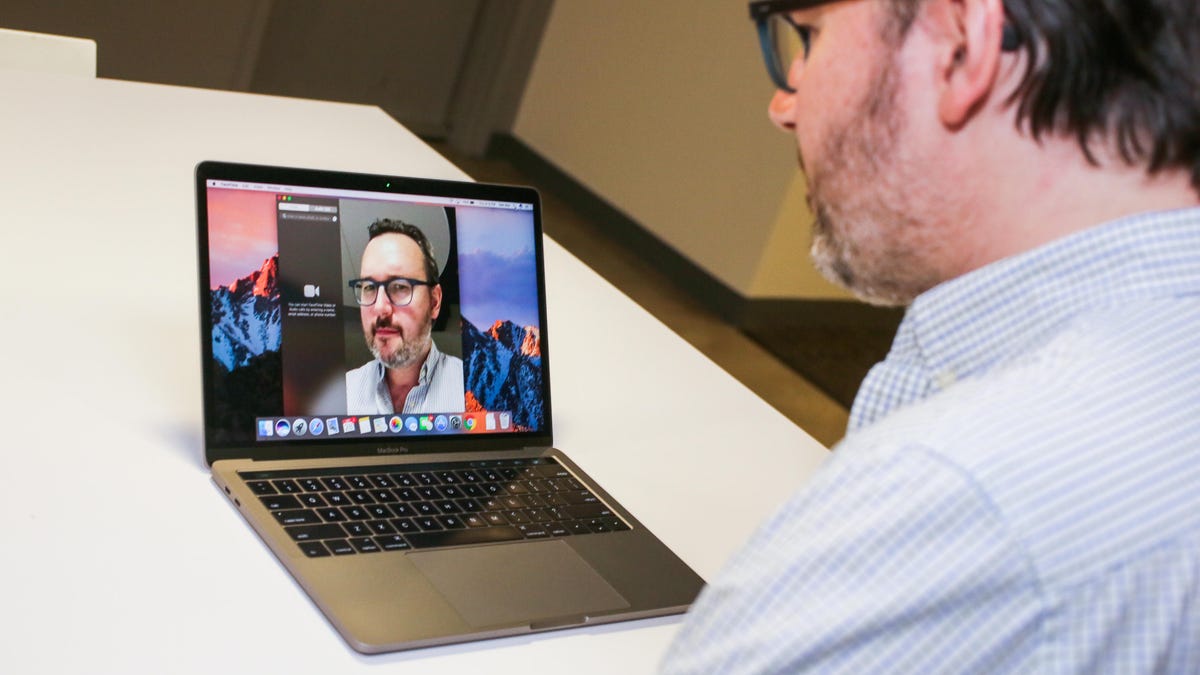Hey Apple: Let's bring Face ID to Macs
The facial recognition technology in the iPhone X would be perfect for the MacBook and iMac.

One of the key selling points of Apple's new iPhone X is Face ID, the facial recognition system for logging users in. Apple claims it's fast, easy and secure, and on paper, it sounds like a step up from similar facial recognition tools on other phones -- but Face ID still has to prove itself in the field.
Potential buyers have expressed reservations about how convenient it is to hold a phone up to your face every time you want to use it, how fast it is, how well it works in low light and other potential snags. Despite everything Apple has revealed about Face ID, there are still plenty of unknowns.
The good news is that most of those challenges wouldn't apply to a laptop, so Face ID still sounds like the kind of tool that would be great to have on a MacBook or iMac . After all, outside of those MacOS computers, using your face to log into a PC is already a well tested feature, thanks to Windows Hello, a biometric security measure built into Windows 10 that can use a compatible webcam for facial recognition.
The iPhone X will be the first Apple device to feature Face ID.
In my hands-on experience (or is that face-on?), Windows Hello is fairly robust. It usually takes several seconds, but almost always recognizes me, even in low light situations, with or without my glasses on. That said, I did recently find a way to trip it up, at least on one laptop. After a recent trip to a rainy Brooklyn Cyclones baseball game, I found myself with a new baseball cap, and when wearing it, Windows Hello assumed I was an imposter and wouldn't log me in. Apple has suggested that Face ID will work with hats and scarves, but we'll have to wait and see if that bears out in real-world testing.
The idea of Face ID making the jump from iPhones to MacBooks isn't as outlandish as you may think. Since late last year, I've been logging into 13- and 15-inch MacBook Pro laptops with my finger, thanks to the Touch ID reader built into MacBooks with Apple's Touch Bar, which is a long OLED touchscreen strip that sits above the keyboard. On the Touch Bar, Touch ID is fast and reliable, and usually takes less than a second to log me in. Also working in Apple's favor is that the current MacBooks with Touch ID already have the same secure enclave as iPhones, and have already done the engineering heavy lifting to make Touch ID work with a Mac's Intel CPU.
And if Touch ID can make the jump from phones to laptops, can Face ID be far behind? A new camera/sensor array would be necessary, as the iPhone X uses both the front-facing camera and a special IR emitter to map the 3D contours of your face -- but surely that's less of an invasive design change than adding a 60-pixel-high OLED secondary display.
The Touch ID fingerprint reader on a MacBook Pro.
Of course, this all adds to the growing fragmentation of biometric security systems. Starting Nov. 3, most iPhones will still have fingerprint-reading Touch ID, except the new iPhone X, which will ditch that for Face ID. Similarly, right now some (but not all) MacBook Pro laptops have Touch ID, while other Macs have no biometric security.
On the Windows PC side, it's just as confusing -- some laptops (or desktops with compatible add-on webcams) have Windows Hello with facial recognition, while some have Windows Hello with fingerprint readers. Plenty of other PCs, mostly on the business side, have for years had their own proprietary fingerprint readers as well, although those have never been as fast or easy to use as Touch ID.
So, even if Apple does bring Face ID to MacOS systems, it would likely be only for some. MacBook Pro models feel like a good bet, and maybe the iMac desktop. But the 12-inch MacBook is saddled with a poor low-res webcam, which would require a major overhaul to work as a biometric security measure. And the MacBook Air ? That's been stuck in a hardware time loop for years. Easier may be iPads, which are closer in form and function to iPhones. I wouldn't be surprised to see Face ID on an iPad Pro before a MacBook.
One interesting cautionary tale about adding facial recognition to consumer electronics comes from the video game world. When the Xbox One and PlayStation 4 both launched in 2013, the consoles each featured a form a facial recognition login, via their camera peripherals .
In a CNET Labs test, we found both systems to be flawed, despite using dual-lens cameras and having a well lit subject in a living room setting. Since then, neither Sony nor Microsoft has seriously pushed facial recognition as either a security or a game feature. The tech behind the Kinect must have been impressive, however, because Apple bought PrimeSense, one of the companies behind it, in 2013 -- and in fact, the Face ID hardware has a similar setup to the Kinect.
Still, the idea of Face ID on a Mac is an easy one to get behind. It might even work better on a laptop than on a phone. "Not only should they put it on there, but it would be a better decision," says CNET editor Scott Stein, one of the few people to have already handled an iPhone X. "On a laptop you're always facing the camera. The camera is always staring right at you. it's right there."

